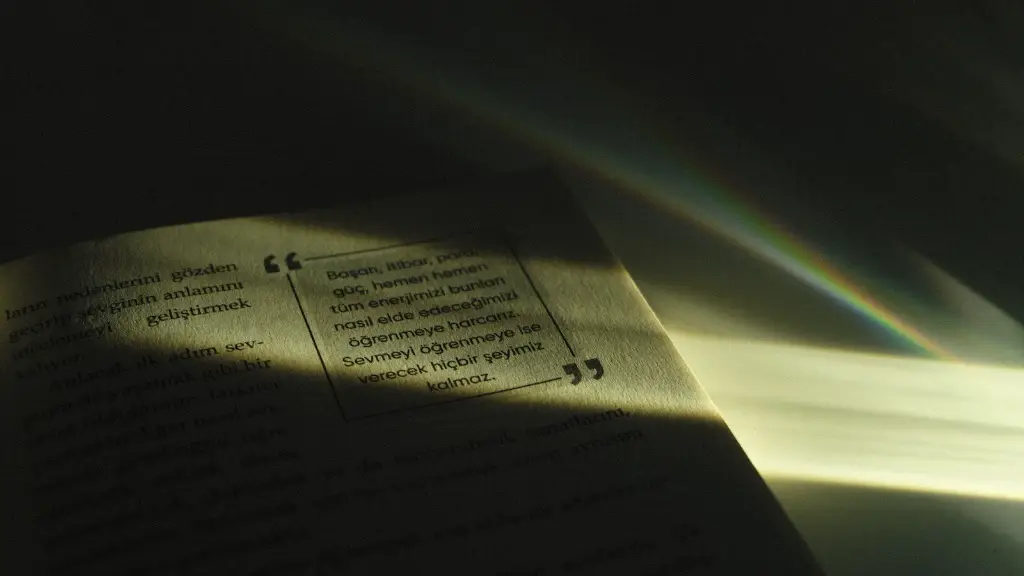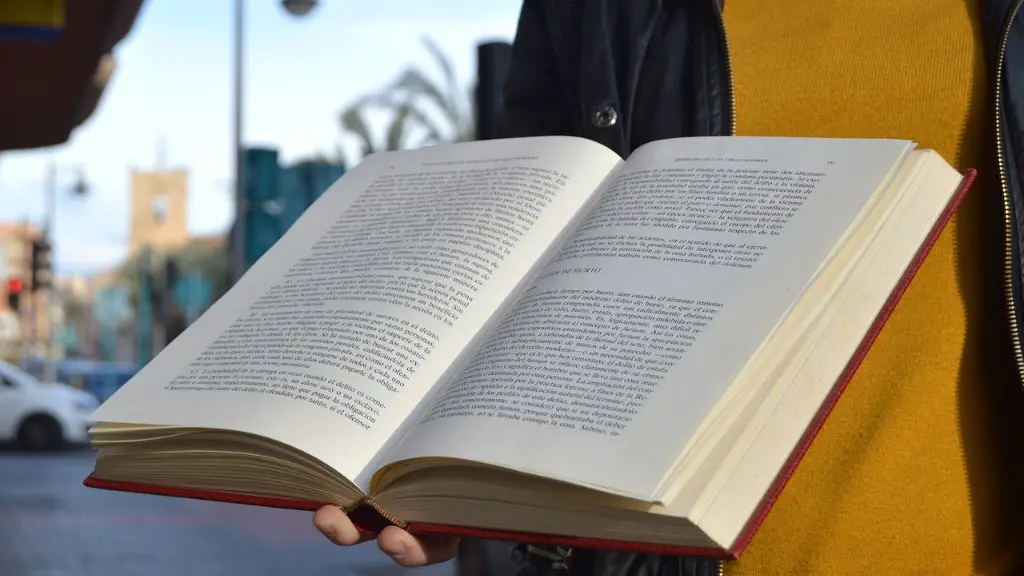Poetry is an important form of literature, but many people are unaware of the formal characteristics of it. Unlike other forms of writing, such as essays and short stories, poetry has specific features and elements that differentiate it from other forms. While there are multiple ways to compose a poem, some features remain constant. This article will discuss the essential features and elements of poetry.
Rhyme
Rhyme is one of the most recognizable and iconic features of poetry. Poem rhymes use words that end with the same sound. As an example, a sentence such as ‘The cat slinks around the corner’ is not considered a poem because the words don’t have a proper end rhyme. However, if the sentence is changed to read ‘The fat cat slinks around the corner’ then it is considered a poem because both the words ‘fat’ and ‘corner’ end with the same sound. Rhymes are often divided into end rhyme types and internal rhyme types. In end rhymes, the words at the end of two adjacent lines sound the same. Internal rhymes occur when two words in the same line share the same sound.
Structure
The structure of poems can also vary greatly. Some poems consist of only one line, while others contain several stanzas and verses. Line length, the order of the lines, and the expansion of content are all important aspects of a poem’s structure. Many poems follow a particular format, but the structure can be altered to reflect different meanings and uses. For example, a poem written in the format of an acrostic may be used to spell out a person’s name.
Metaphors and Similes
Metaphors and similes are common techniques used in poetry. Metaphors compare two unlike things without using the words ‘like’ or ‘as’, while similes compare two unlike things using those words. Both metaphors and similes can be used to help draw a comparison between the topics of the poem and create a richer, more dynamic understanding of the poem’s subject. For example, in William Wordsworth’s poem ‘Daffodils’, he uses the metaphor of a dance to describe how the daffodils were “fluttering and dancing in the breeze”.
Imagery
Imagery is an important feature of poetry. Poems often use vivid language to create a mental image in the reader’s mind. God images help the reader to understand the poem’s meaning in a more personal and intimate way. Imagery also helps to evoke emotion in the reader. For example, in Robert Frost’s poem “Stopping by Woods on a Snowy Evening”, there is the imagery of a peaceful, snowy evening that evokes a sense of tranquility.
Symbolism
Symbolism is another important feature of poetry. Symbols are objects or concepts that can be used to represent something else. Poets use symbols to convey an idea or deeper meaning behind the words. For example, in John Keats’s poem “Ode to a Nightingale”, he uses the nightingale as a symbol of death.
Repetition
Repetition is a way of emphasizing certain words or phrases in a poem. It can be used to create a rhythm or make a point that the poet wants to convey. For example, in Maya Angelou’s poem “Still I Rise”, she repeatedly uses the phrase “I rise” to convey her resilience and determination.
Rhythm
Rhythm is also an important element of poetry. Rhythm refers to the regular pattern of sound that is created by the combination of stressed and unstressed syllables. Poets use rhythm to create a musical-like quality and add emphasis to the words. For example, in Tennyson’s “The Coming of Arthur”, the poet uses a regular rhythm to create a sense of anticipation and excitement.
Voice
Voice refers to the individual style and tone of a poet’s writing. Voice can be subjective and can change depending on the content of the poem. Different poets often use different voices to convey different messages. For example, in W.B. Yeats’ “The Lake Isle of Innisfree,” the poetic voice is wistful and dreamy.
Sound Devices
Sound devices are also an important part of poetry. They help to create rhythm, add emphasis, and introduce emotion into the poem. Popular sound devices include alliteration, assonance, and consonance. Alliteration is the repetition of a sound at the beginning of words. Assonance is the repetition of a vowel sound in nearby words. Consonance is the repetition of consonant sounds in nearby words.
Motifs
Motifs are recurring symbols or themes in a poem. Motifs can add an extra dimension of meaning to a poem that may not be immediately apparent. Additionally, motifs can help to tie a poem together, providing a sense of cohesion and a larger message for the reader. For example, in Robert Frost’s poem “The Road Not Taken,” the motif of the road is used to represent the difficult choices we make in life.
Personification
Personification is the attribution of human qualities to non-human things. Personification is often used in poetry to add life and emotion to a poem. For example, in Langston Hughes’s “Dreams,” he personifies dreams as being something that “die if they are not fulfilled”. This adds an emotional element to the poem and emphasizes the importance of dreaming.
Style
Poets often have their own particular style of writing, which can be characterized by the language, imagery, and structure of the poem. Style can vary greatly from poet to poet. For example, a poet such as Emily Dickinson often employs a very abstract style, while Walt Whitman often uses a more direct and colloquial style.
Thematic Context
Thematic context refers to the idea or message of a poem. Many poems contain underlying themes that can be interpreted and analyzed by the reader. For example, a poem about a train journey could be interpreted metaphorically as a journey through life, with each station representing a different milestone or stage in the journey.
Conclusion
These are the main features and elements of poetry. Poetry is an ancient and powerful form of communication that can evoke strong emotions and provoke thought in those who read or listen to it. While there are multiple ways to compose a poem, understanding the traditional features and elements of poetry is essential for writing effective and meaningful pieces.



